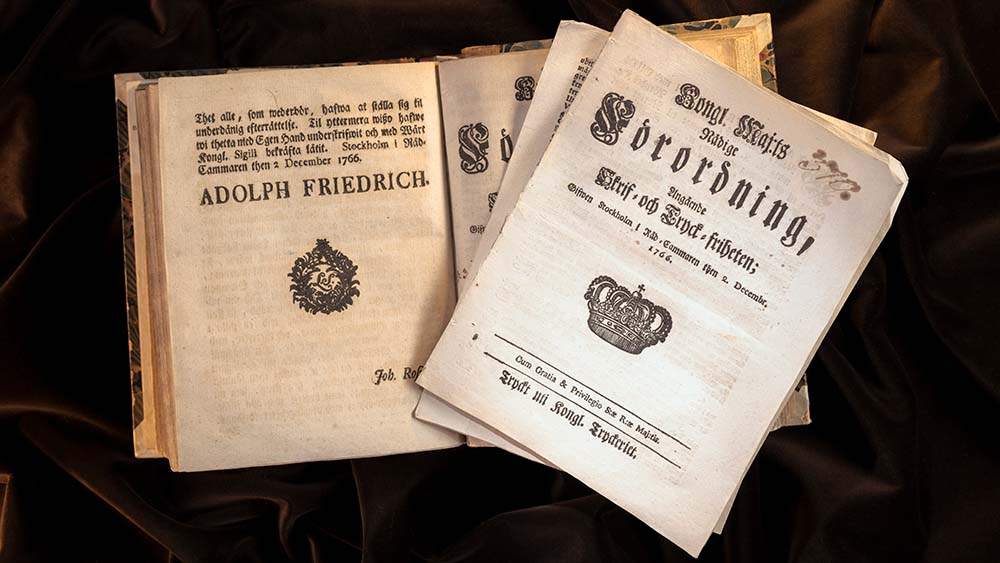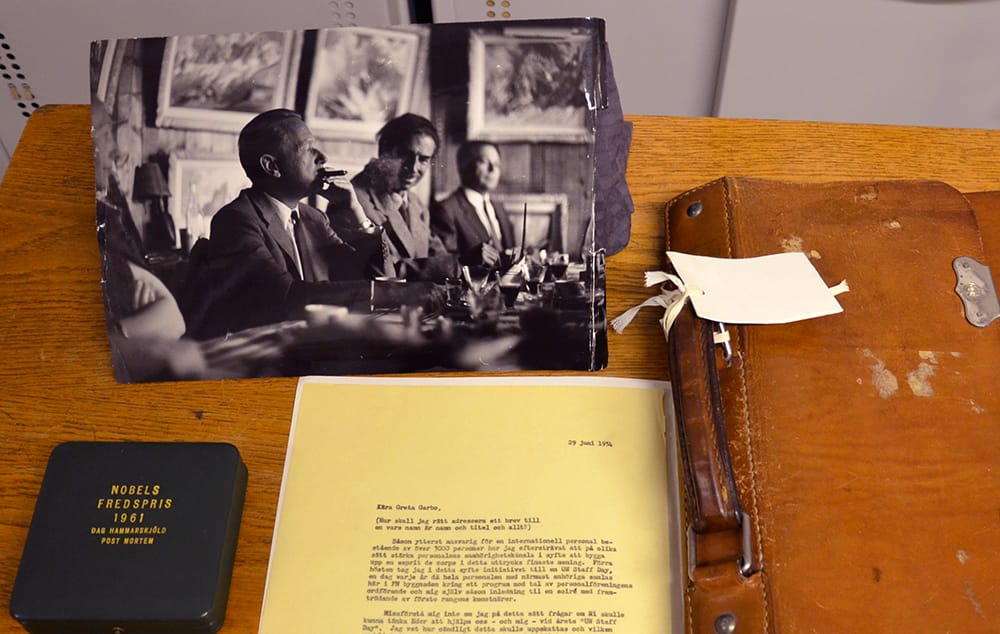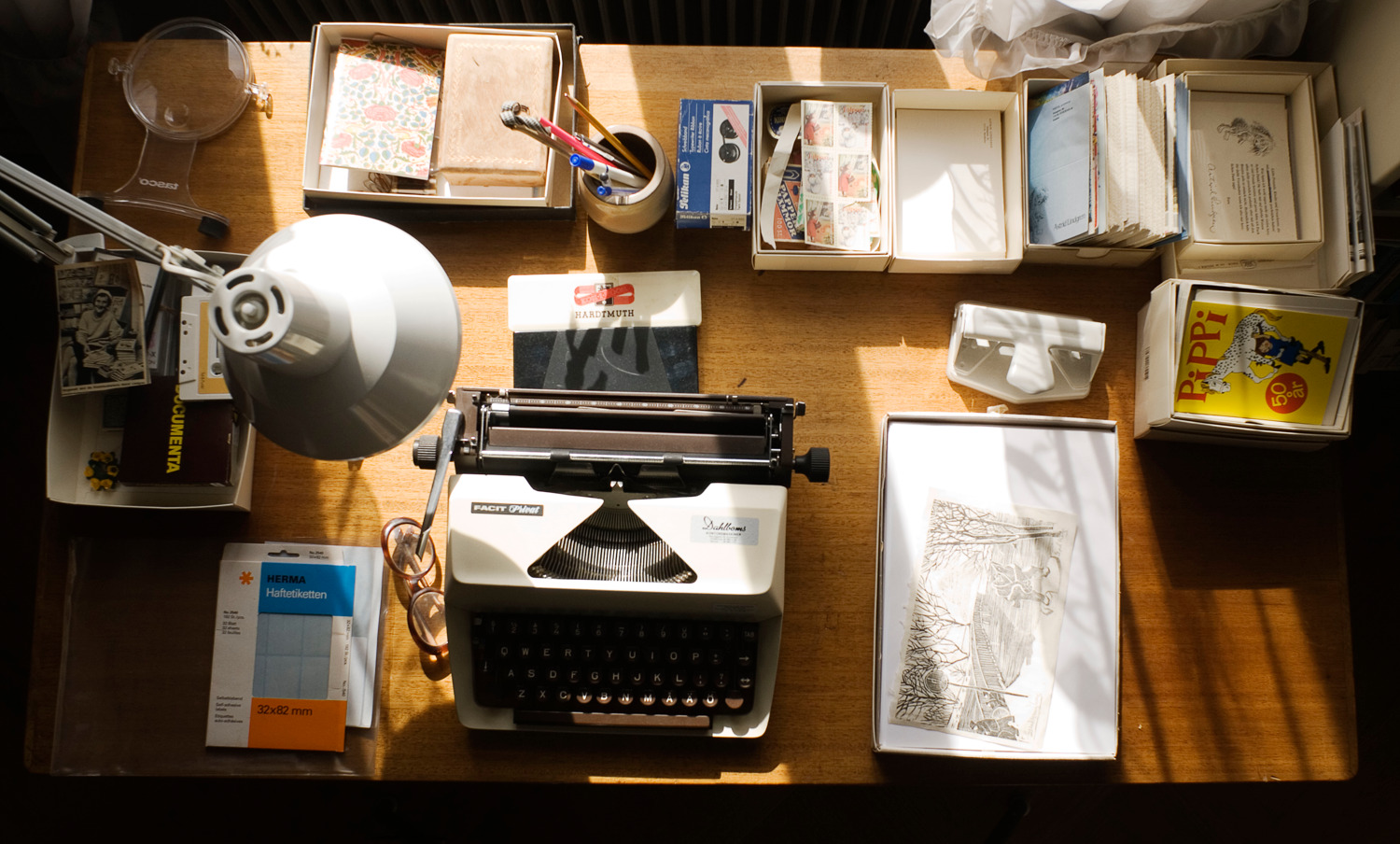World memories at the National Library
The National Library houses three pieces of documentary heritage that have been inscribed in Unescos Memory of the World International Register: the 1766 Freedom of the Press Act, the Dag Hammarskjöld Collection and the Astrid Lindgren Archive.
The Memory of the World Programme is an international initiative that recognises documentary heritage of global importance, with the aim of promoting the preservation of collections and ensuring their accessibility both now and in the future.
Freedom of the Press Act of 1766
Sweden was the first country in the world to have a Freedom of the Press Act. It included both the right to express oneself freely and to access public documents. The source material is preserved at The National Library and the National Archives.

Photo: Jens Östman/KB
The regulation consisted of two parts:
- The right for everyone to publish thoughts, opinions and feelings in print.
- The right for everyone to consult the documents of public authorities and governing bodies (such as decisions, minutes and reports), and to print them if they wish. This right is known as the principle of openness.
In the mid-18th century, Sweden had a unique parliamentary system that gave great power to the Riksdag and little power to the King. During the Age of Liberty, 1719-1772, it became important to be able to freely exchange thoughts and ideas, as well as to be able to raise public opinion and conduct public debate. This led to the first Freedom of the Press Act.
Through sources held at the National Archives, we can follow the process of formulating a Freedom of the Press Ordinance, and through printed matter preserved at the KB, we can study the impact of the law.
The documents were designated a World Heritage Site by UNESCO in 2023.
The Dag Hammarskjöld collection
Dag Hammarskjöld (1905-1961) was Secretary-General of the United Nations from 1953 to 1961, when he was killed in a plane crash during a peacekeeping mission in the Congo.

Photo: Anette Lindh/KB
He was awarded the Nobel Peace Prize posthumously, the same year as the accident.
After his death, the collection was donated to the KB, where it is still kept. It includes documents relating to the United Nations, manuscripts, letters and personal documents on world politics. It comprises around 45 shelf meters and the documents are mainly in English.
The Dag Hammarskjöld Collection was designated a World Heritage Site in 2017.
Astrid Lindgren archive
Astrid Lindgren (1907-2002) is perhaps Sweden's most famous and popular author ever. She began transferring material to the National Library as early as 1980.

Photo: Jessica Lund/KB
When the first boxes arrived, Astrid Lindgren was advised by the head of the manuscript department at the time not to "throw anything away". An advice that she carefully followed. After her death, both her heirs and other donors continued to transfer material to the archive.
Today, Astrid Lindgren's archive comprises a total of 137 shelf meters of paper, photographs, sound recordings and moving images plus 8.5 shelf meters of books. The material mainly covers the period 1933-2007, but the emphasis is on the period after 1970.
The Astrid Lindgren Archive was designated a World Heritage Site in 2005.

%20Tryckfrihetsfo%CC%88rordningen.jpg)